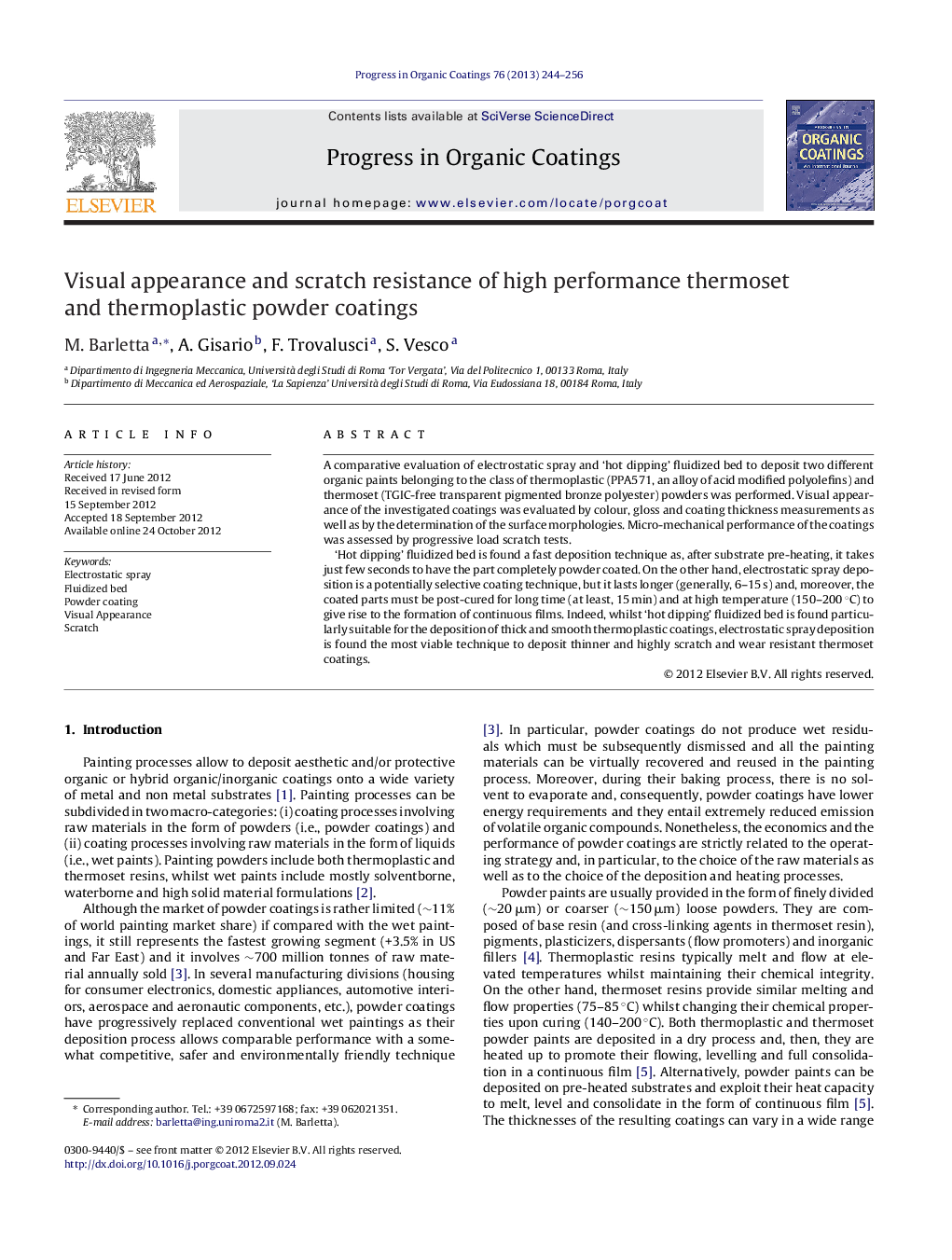| Article ID | Journal | Published Year | Pages | File Type |
|---|---|---|---|---|
| 692808 | Progress in Organic Coatings | 2013 | 13 Pages |
A comparative evaluation of electrostatic spray and ‘hot dipping’ fluidized bed to deposit two different organic paints belonging to the class of thermoplastic (PPA571, an alloy of acid modified polyolefins) and thermoset (TGIC-free transparent pigmented bronze polyester) powders was performed. Visual appearance of the investigated coatings was evaluated by colour, gloss and coating thickness measurements as well as by the determination of the surface morphologies. Micro-mechanical performance of the coatings was assessed by progressive load scratch tests.‘Hot dipping’ fluidized bed is found a fast deposition technique as, after substrate pre-heating, it takes just few seconds to have the part completely powder coated. On the other hand, electrostatic spray deposition is a potentially selective coating technique, but it lasts longer (generally, 6–15 s) and, moreover, the coated parts must be post-cured for long time (at least, 15 min) and at high temperature (150–200 °C) to give rise to the formation of continuous films. Indeed, whilst ‘hot dipping’ fluidized bed is found particularly suitable for the deposition of thick and smooth thermoplastic coatings, electrostatic spray deposition is found the most viable technique to deposit thinner and highly scratch and wear resistant thermoset coatings.
► ‘Hot dipping’ fluidized bed and electrostatic spray. ► Visual appearance evaluated by colour, gloss and surface morphology. ► Scratch response evaluated by progressive mode scratch tests. ► Electrostatically sprayed thermoset powders exhibit better scratch response. ► Thermoplastic coatings display better visual appearance but very singular scratch properties.
